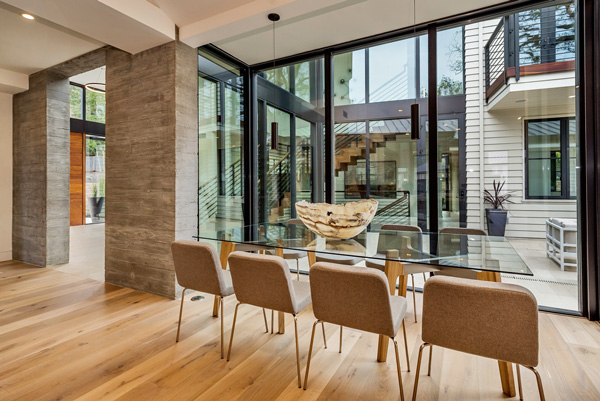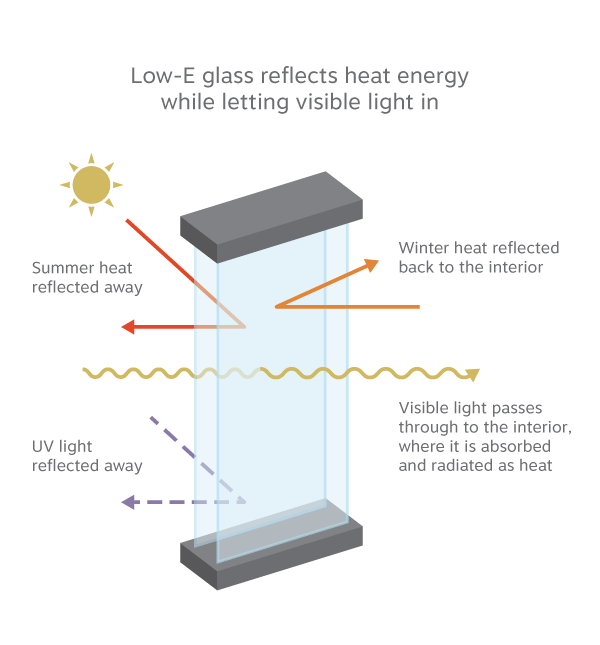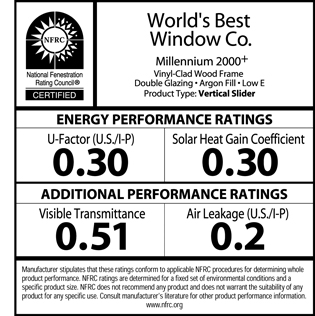These resources are from an archived version of our website. Want to see what we’ve been up to lately? Check out our new website.
Choosing energy-efficient windows – understanding U-factor

Windows are a crucial component in the design of a house, and their aesthetic appeal can help support the overall style of the building. They allow daylight into the home and give us a visual connection to the outside world. We expect windows to let in fresh air and breezes when the weather is right. And – when the weather is unpleasant – we want our windows to be airtight with great thermal insulation.
It should come as no surprise that windows play a huge role in the overall energy efficiency of your home. Windows help to moderate heat flow, making them a key contributor to your home’s gross energy consumption.
Windows, doors, and skylights can gain and lose heat through:
- Direct conduction through the glass or glazing, frame, and/or door
- The radiation of heat into a house (typically from the sun) and out of a house from room-temperature objects, such as people, furniture, and interior walls
- Air leakage through and around them
- The amount of air or gas space between panes of glass
Inefficient, leaky windows result in added energy needs and higher bills. In order to maximize energy efficiency, we must first take a closer look at individual building components, to see how they can work individually and in relation to each other in more effective ways.
U-Factor: What is it, and why does it matter?
When determining a window’s energy efficiency, the rate of heat transfer is expressed as its U-factor. The U-factor is represented by the heat flow per hour (in Btus per hour or watts), through each square foot of window, for a 1 degree Fahrenheit temperature difference between indoor/outdoor air temperature (or Btu/hr-ft2-°F). The lower the U-factor, the greater a window’s resistance to heat flow – and the better its insulating properties.
Given that the thermal properties and the various materials within a window unit, the U-factor is commonly expressed in two ways:
- U-factor of the complete window assembly: This includes the glazing, window frame and spacer.
- Center-of-glass U-factor: This is measured from the center of the window plane, without addressing the impact of the frame edge effects and material.
The temperature difference between the interior and exterior of a building creates the non-solar heat flow – which results in windows losing heat to the outside during the winter, and gaining heat from outside during the summer. U-factor is particularly important during the winter heating season in colder climates.
Low-E glass windows
Low emissive (or Low-E) is window glass that has been treated with an invisible metal or metallic oxide coating – creating a surface that allows light to pass through while still reflecting heat. Low-E windows are proven to reduce energy consumption and increase overall comfort in your home.
In warm summer months, Low-E glass reduces the amount of ultraviolet light that enters your home. In winter, Low-E glass reduces the amount of heat lost through your windows from the inside of your home.

How to select an energy-efficient window
You can use the energy performance ratings of windows, doors, and skylights to tell you their potential for losing heat.
 The National Fenestration Rating Council (NFRC) tests, certifies, and labels windows, doors, and skylights based on their energy performance ratings. The NFRC label provides a reliable way to determine a window’s energy properties and to compare products. The NFRC label can be found on all ENERGY STAR® qualified window, door, and skylight products.
The National Fenestration Rating Council (NFRC) tests, certifies, and labels windows, doors, and skylights based on their energy performance ratings. The NFRC label provides a reliable way to determine a window’s energy properties and to compare products. The NFRC label can be found on all ENERGY STAR® qualified window, door, and skylight products.
The U-factor can be found on the upper-left quadrant of the label. The best, high-performance, double-pane windows may have a U-factor of 0.30 or lower, indicating that they are very energy-efficient.
The bottom line
At Clarum, we believe every component of a home should contribute to reducing expenses and unnecessary energy use. When building your new home, selecting energy-efficient windows is an important step to ensuring optimal performance – keeping your family comfortable and utility costs low.
To learn more about Clarum’s approach to building high performance homes, click here or give us a call at (650) 322 – 7069.








